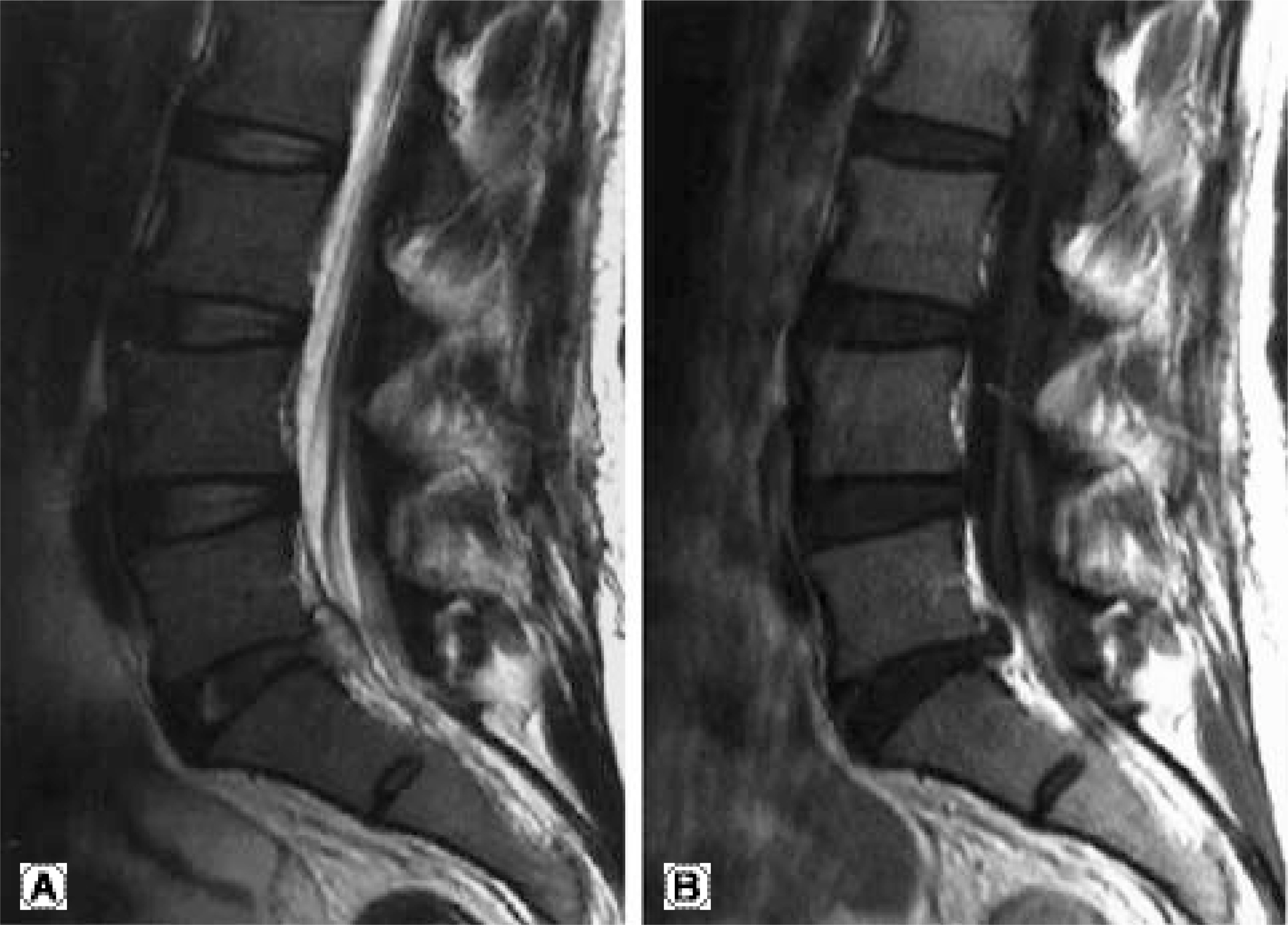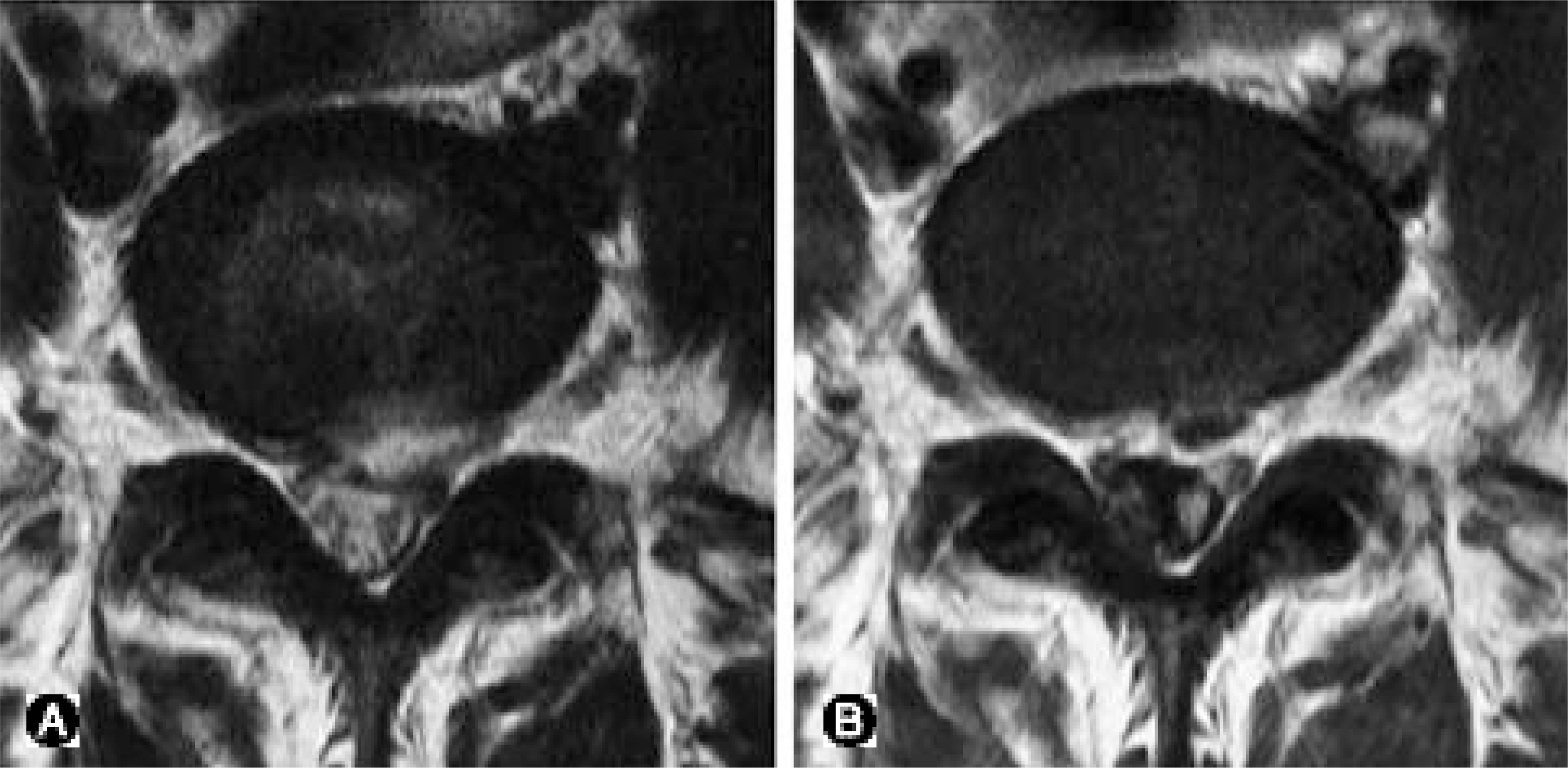J Korean Soc Spine Surg.
2005 Dec;12(4):365-368.
Cauda Equina Syndrome After Percutaneous Endoscopic Discectomy At L5-S1: A case Report
- Affiliations
-
- 1Department of Orthopedic Surgery, Spine Center Soonchunhyang University College of Medicine, Seoul, Korea. schsbj@hosp.sch.ac.kr
- 2Department of Orthopedic Surgery, Soonchunhyang Gumi Hospital Korea.
Abstract
- The Cauda Equina syndrome after spine surgery is a relatively uncommon condition, but it is a serious complication that needs emergency treatment. A 35-year-old woman was transferred to our hospital and she presented with decreased perianal sensation and rectal tone after percutaneous endoscopic discectomy. Magnetic resonance image showed that the dura sac was compressed by herniated disc material at L5-S1. After performing emergency open discectomy for the cauda eguina syndrome, the patient's neurologic symptoms were completely resolved at 12 months follow-up. There has been no previous report on Cauda Equina syndrome after percutaneous endoscopic discectomy, and so we report here on one case.
MeSH Terms
Figure
Reference
-
1). McLaren AC, Bailey SI. Cauda equina syndrome: a complication of lumbar discectomy. Clin Orthop. 1986; 204:143–149.2). Shin BJ. Percutaneous Endoscopic discectomy: The 49th Spring Congress of the Korea Orthop. Assoc. 2004; 266-271.3). Aho AJ, Auranen A, Pesonen K. Analysis of cauda equina syndrome in patients with lumbar disc prolapse. Preoperative and follow up clinical and cytometric studies. Acta chir Scand. 1969; 135:413–420.4). Choundhury AR, Taylor JC. Cauda equina syndrome in lumbar disc disease. Acta orthop Scand. 1980; 51:493–499.5). Jennet WB. A study of 25 cases of comression of the cauda equina by prolapsed intervertebral discs. J Neurol Aeursurg and Psychiat. 1956; 19:109–116.6). Kostuik JP, Harrington L, Alexander D, Rand W, Evans D. Cauda equina syndrome and lumbar disc herni -aion. J Bone Joint Surg. 1986; 68-A:386–391.7). Shephard RH. Diagnosis and prognosis of cauda equina syndrome produced by protrusion of lumbar disc. J British Med. 1959; 1434-1439.8). Delamarter RB, Sherman J, Carr JB. Cauda equina syndrome: Neurologic recovery following immediate, early, late decompression. Spine. 1991; 16:493–499.
- Full Text Links
- Actions
-
Cited
- CITED
-
- Close
- Share
- Similar articles
-
- Endoscopic Discectomy for the Cauda Equina Syndrome During Third Trimester of Pregnancy
- Acute Cauda Equina Syndrome after Percutaneous Transforaminal Endoscopic Discectomy
- Percutaneous Endoscopic Transforaminal Lumbar Discectomy For Massive Disc Herniation Causing Cauda Equina Syndrome: A Case Report
- Lumbar Disc Herniation Presenting Cauda Equina Syndrome
- Cavernous Hemangioma of the Cauda Equina



